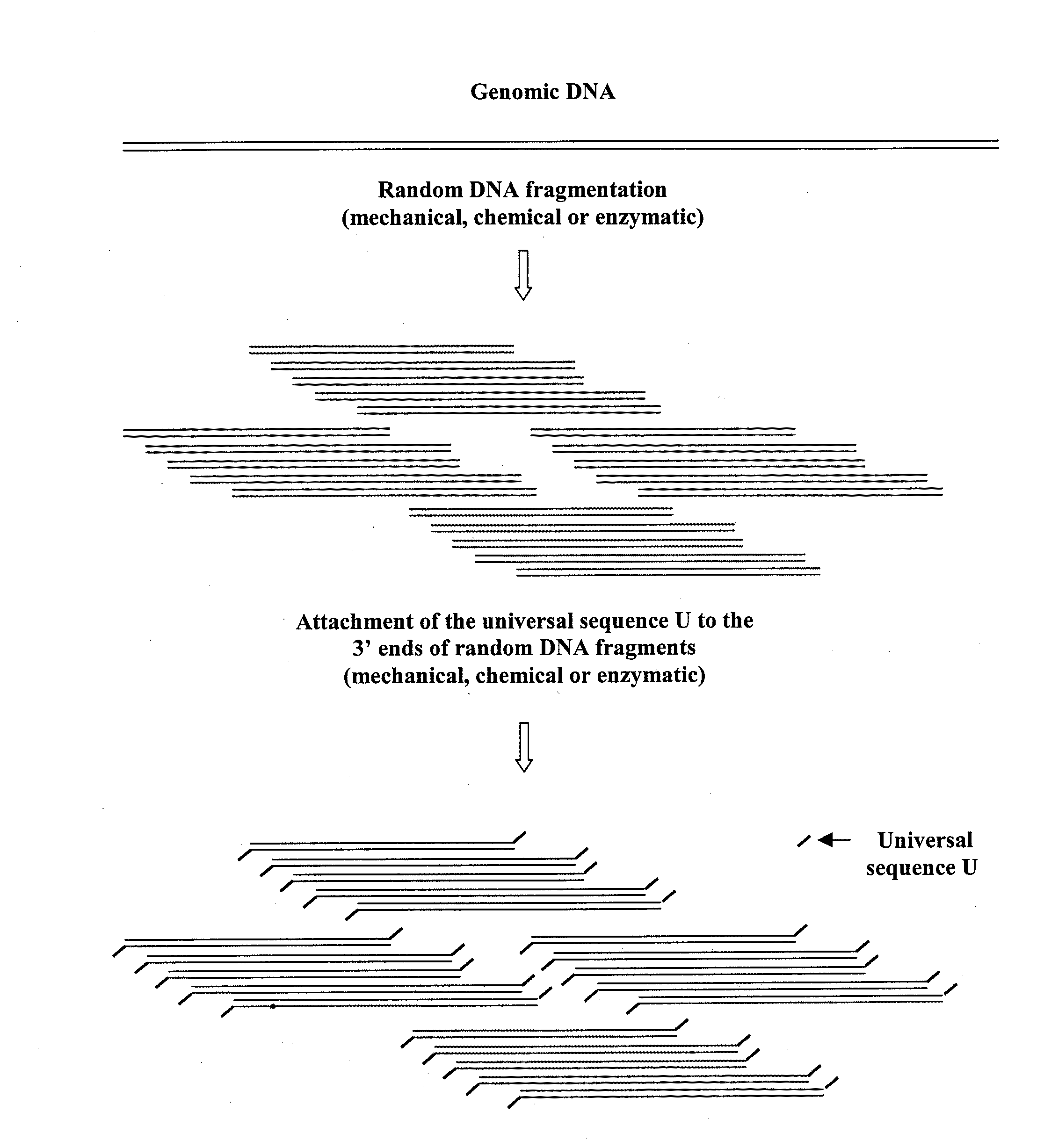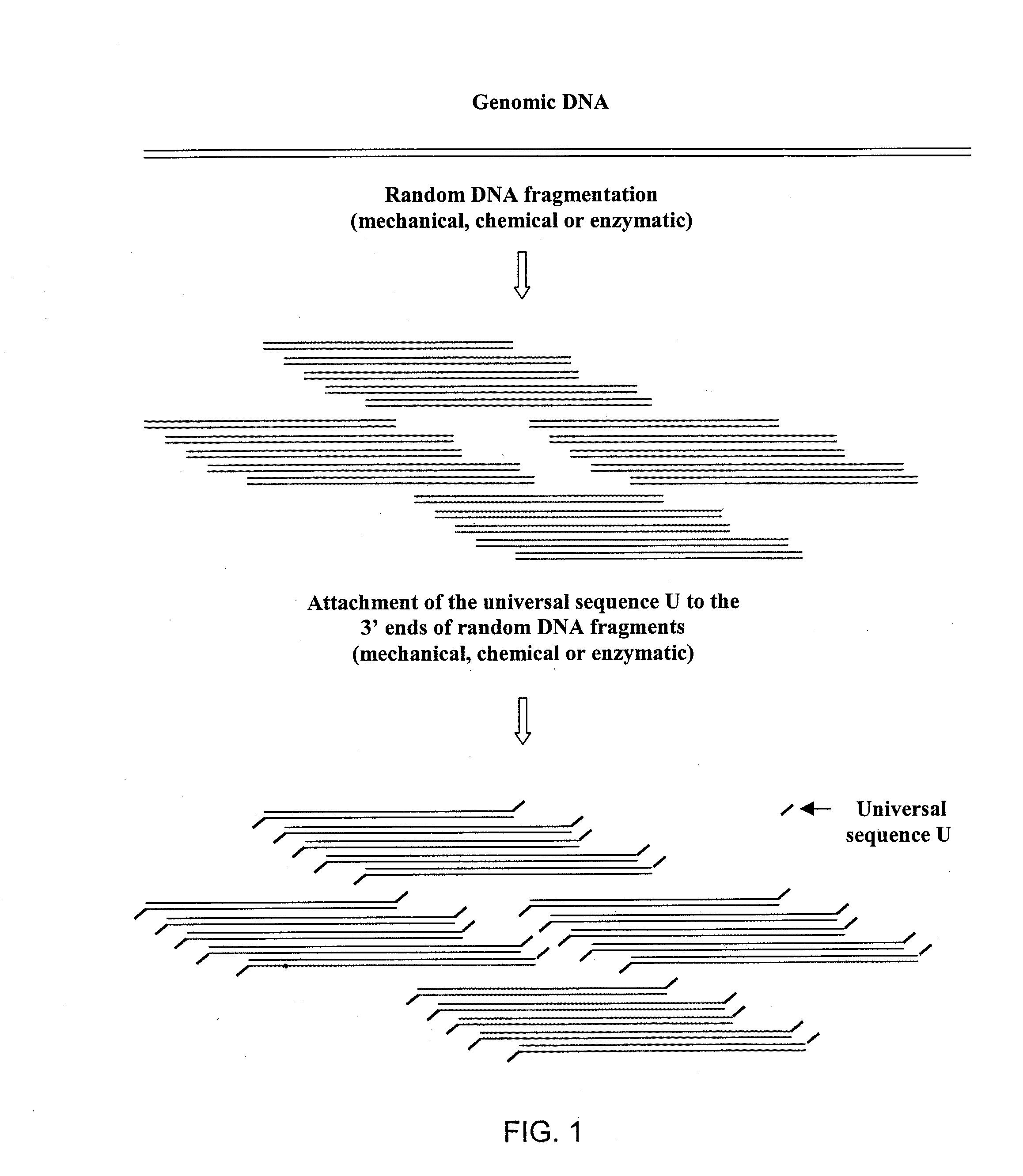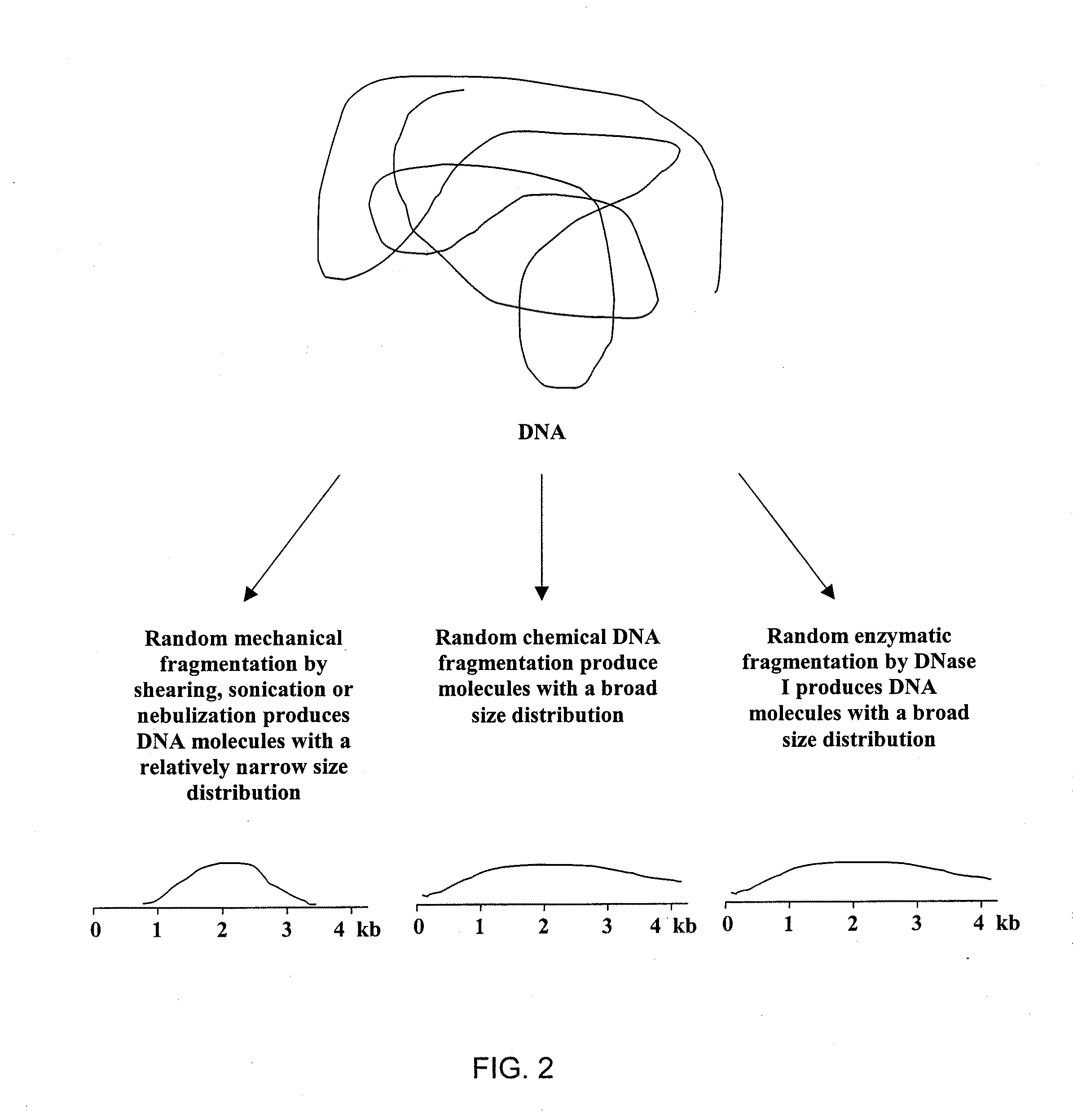DNA amplification and sequencing using DNA molecules generated by random fragmentation
a technology of random fragmentation and dna amplification, applied in the field of dna amplification and sequencing using random fragmentation, can solve the problem of inability to be utilized as template for sequencing with clarity
- Summary
- Abstract
- Description
- Claims
- Application Information
AI Technical Summary
Problems solved by technology
Method used
Image
Examples
example 1
Preparation of TRF Library from E. coli Genomic DNA by Hydrodynamic Shearing
[0216]This example describes the preparation of TRF library of average size of 3 Kb from E. coli genomic DNA, particularly by hydrodynamic shearing (HydroShear device, GeneMachines) and terminal transferase mediated tailing with deoxyguanosine triphosphate (dGTP).
[0217]The prepared library allows reproducible amplification of many nested DNA mixtures using one sequence-specific primer and universal homopolymeric primer C10 (containing ten cytosines). Sequencing of these mixtures using the same primer generates 600 to 800 base reads adjacent to chosen kernel primers.
[0218]DNA is isolated by standard purification from E. coli, such as strain MG1655 (purchased from Yale University), and diluted to 100 ng / μl in TE-L buffer (10 mM Tris-HCl, 0.1 mM EDTA, pH 7.5). The sample is incubated at 45° C. for 15 min. During the course of the incubation the DNA sample is vortexed at maximum speed for 30 sec every 3 min. The...
example 2
Amplification and Sequencing of E. coli DNA Regions with Specific Primers from TRF Library Prepared by Hydrodynamic Shearing
[0221]DNA AMPLIFICATION AND SEQUENCING USING DNA MOLECULES GENERATED BY RANDOM FRAGMENTATION This example describes amplification and sequencing of specific regions from an E. coli TRF library. During PCR™ amplification a specific primer is used along with a 10 base homopolymeric cytosine primer (C10 primer). The resulting amplicon is then utilized as template for cycle sequencing with the same specific primer used in the PCR™.
[0222]Amplification primers are designed using Oligo version 6.53 primer analysis software (Molecular Biology Insights, Inc., Cascade, Colo.) Primers are 21 to 23 bases long, having high internal stability, low 3′-end stability, and melting temperatures of 57 to 62° C. (at 50 mM salt and 2 mM MgCl2). Primers are designed to meet all standard criteria, such as low primer-dimer and hairpin formation, and are filtered against an E. coli geno...
example 3
Amplification and Sequencing by Primer Walking within the DNA Amplicons Generated from TRF Library
[0230]This example describes the amplification and sequencing of a specific region from an E. coli TRF library (prepared by hydrodynamic shearing) by a primer walking approach. During Touch Down PCR™ (TD PCR™) amplification, the specific primer is used along with the universal 10-mer poly-C(C10) primer. TD PCR™ conditions are chosen to increase the yield of amplified products. The resulting amplicon is then utilized as template for cycle sequencing with primers distal (in the 3′ direction) to the amplification primer. The distal, or walking, primers are typically spaced to generate overlapping sequencing reads. Reads are then combined to form one long, contiguous sequence.
[0231]Primer S1 is designed to target amplification of one specific region of the E. coli DNA amplicon S1 (FIG. 1 and Table I). TD PCR™ amplification is performed with 300 nM specific primer, 300 nM of universal C10 pr...
PUM
| Property | Measurement | Unit |
|---|---|---|
| temperature | aaaaa | aaaaa |
| temperature | aaaaa | aaaaa |
| temperature | aaaaa | aaaaa |
Abstract
Description
Claims
Application Information
 Login to View More
Login to View More - R&D
- Intellectual Property
- Life Sciences
- Materials
- Tech Scout
- Unparalleled Data Quality
- Higher Quality Content
- 60% Fewer Hallucinations
Browse by: Latest US Patents, China's latest patents, Technical Efficacy Thesaurus, Application Domain, Technology Topic, Popular Technical Reports.
© 2025 PatSnap. All rights reserved.Legal|Privacy policy|Modern Slavery Act Transparency Statement|Sitemap|About US| Contact US: help@patsnap.com



